Go the extra mile
Towards a cooler planet
How NZ dairy farmers are balancing production with the environment
New Zealand dairy farming is a leader in sustainable agriculture, producing milk with 60% fewer emissions per litre compared to the global average. This efficiency is crucial as the global population is projected to reach 10 billion by 2050, necessitating sustainable methods to feed everyone. New Zealand's dairy industry supports around 40 million people worldwide.
Fonterra, a major player in this sector, is a cooperative owned by approximately 10,000 New Zealand farmers. It stands as one of the largest dairy exporters globally, with products distributed to over 130 countries. Fonterra prioritizes sustainability and environmental stewardship in its operations. As demand for sustainable products grows, particularly among millennials, Fonterra continues to innovate to reduce emissions and enhance farm sustainability, ensuring that New Zealand’s natural beauty can be enjoyed by future generations.
Collaboration is essential in addressing climate change and advancing sustainable farming. The Dairy Action for Climate Control initiative highlights the importance of teamwork in developing new breeding and feeding methods to lower emissions and make dairy farming more environmentally conscious.
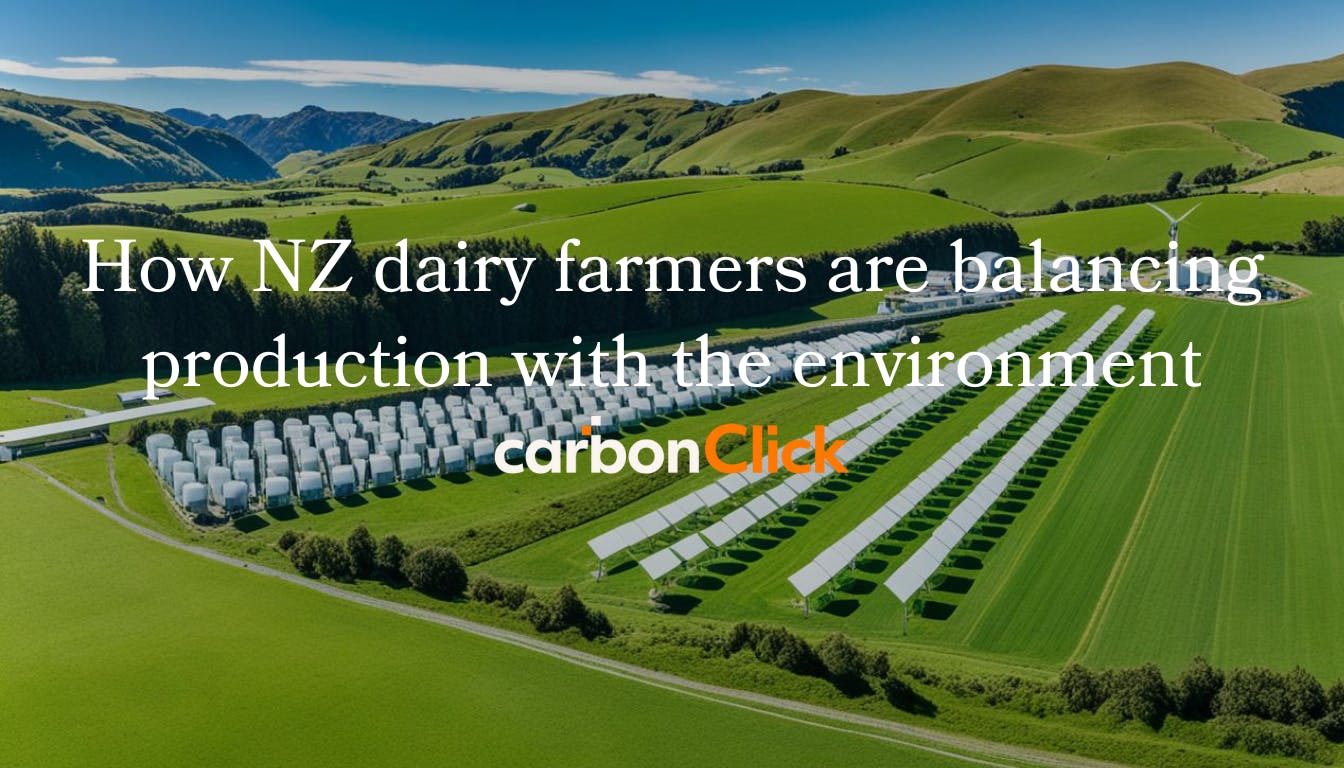
Key takeaways
- New Zealand dairy farmers feed approximately 40 million people globally.
- By 2050, the global population is projected to reach 10 billion, increasing the need for sustainable food production.
- New Zealand farmers produce milk with 60% fewer emissions than the global average.
- Fonterra focuses on long-term strategies to reduce agricultural greenhouse gas emissions.
- Collaboration among various stakeholders is essential to address environmental challenges.
Research and new farming methods are crucial for balancing dairy production and protecting the environment. By addressing issues like greenhouse gas emissions, the dairy industry can work towards a sustainable future.
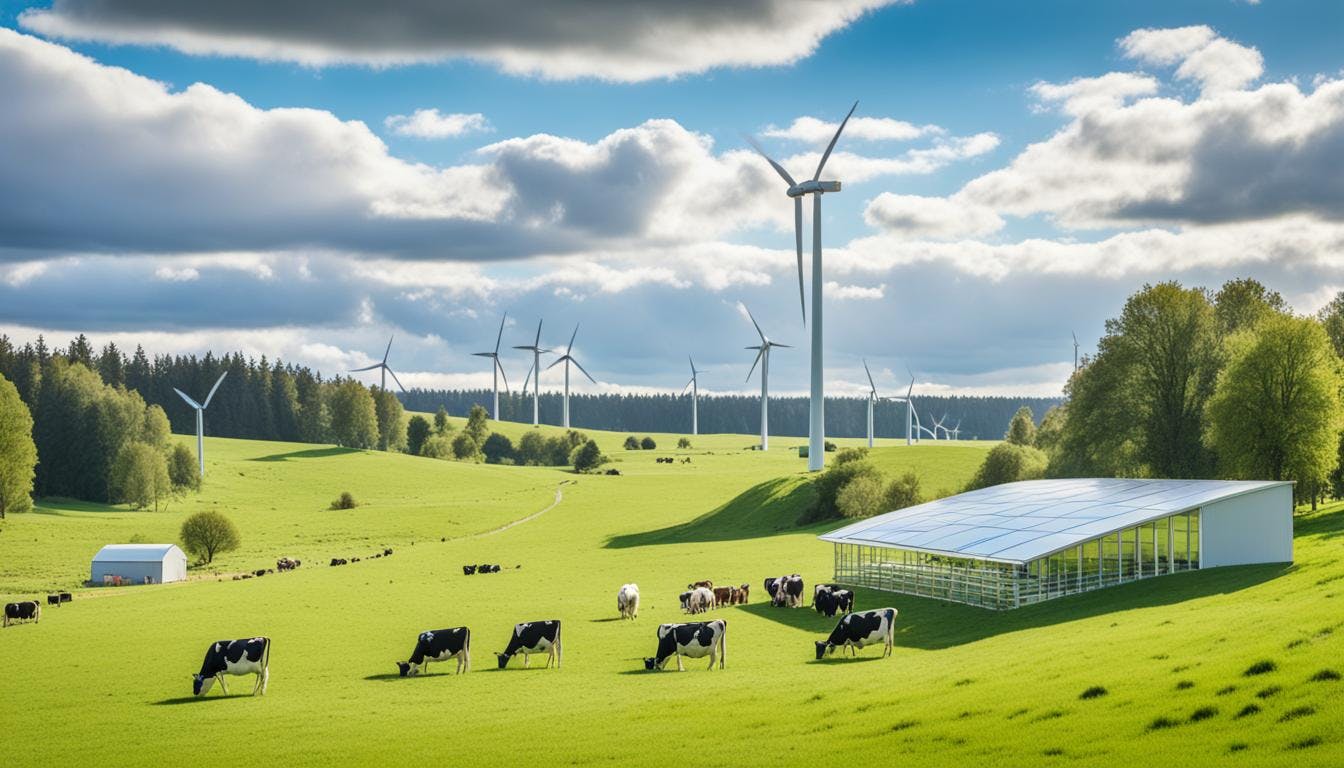
The importance of sustainability in New Zealand dairy farming
Consumer demand for sustainable products
Consumer demand for sustainable products is increasing, particularly among millennials and baby boomers. Research indicates that 75% of millennials and 34% of baby boomers prefer sustainable options. This shift significantly impacts the dairy industry, driving farmers to adopt more environmentally friendly practices.
Major companies like Fonterra are responding to this demand by emphasizing sustainability. For Fonterra, sustainability is not only a moral imperative but also a competitive edge in the market.
Long-term benefits for farmers and the environment
Sustainable farming offers numerous long-term benefits. It reduces emissions and incorporates sustainable practices, contributing to New Zealand’s goal of achieving carbon neutrality by 2050. Additionally, sustainable methods address issues such as nutrient pollution, water contamination, and soil degradation. By prioritizing environmental stewardship, farmers can meet regulatory standards, enhance ecosystem health, and ensure the land remains productive for future generations.
Understanding greenhouse gas emissions
In New Zealand, nearly half of the country’s greenhouse gas emissions come from agriculture, with significant impacts from methane and nitrous oxide. Methane, which is about 25 times more potent than CO2, has increased by over 150% since the 1700s, largely due to expanded farming practices.
Knowing your number
Farmers are required to monitor their farm’s greenhouse gas emissions, a legal obligation that began in December 2022. This data is crucial for understanding the carbon footprint of dairy operations. Ongoing research focuses on developing low-emission animal breeds and using feed additives to further reduce emissions.
Strategies for emission reduction
To lower greenhouse gas emissions, farmers can adopt several strategies: better feed management, reduced nitrogen use, and tree planting. These practices align with the Climate Change Response (Zero Carbon) Amendment Act, which targets a 10% reduction in agricultural methane emissions by 2030 and a 24-47% reduction by 2050.
Example: Fonterra’s emission reduction efforts
Fonterra has successfully cut its greenhouse gas emissions by about 33% over the past five years. This reduction was achieved through methods such as using lower-emission crops, reducing nitrogen use, and optimizing water systems.
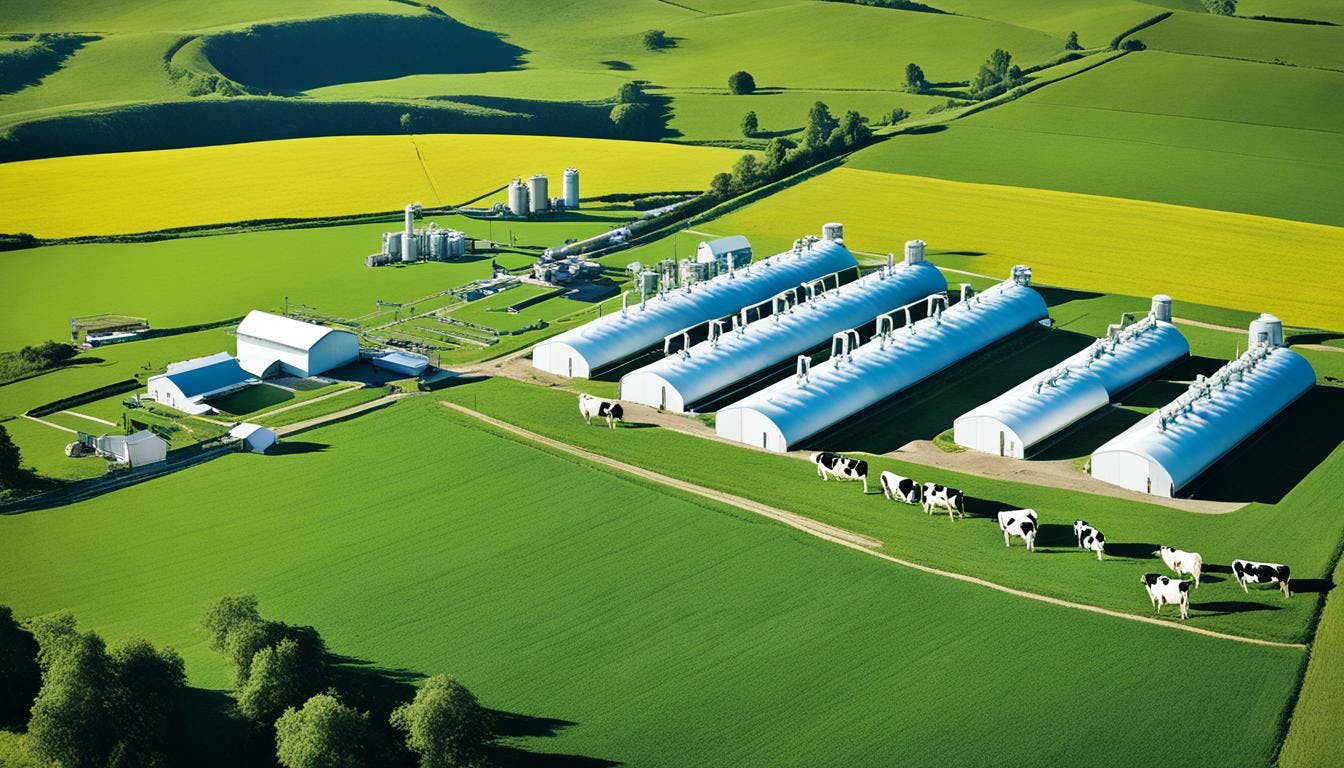
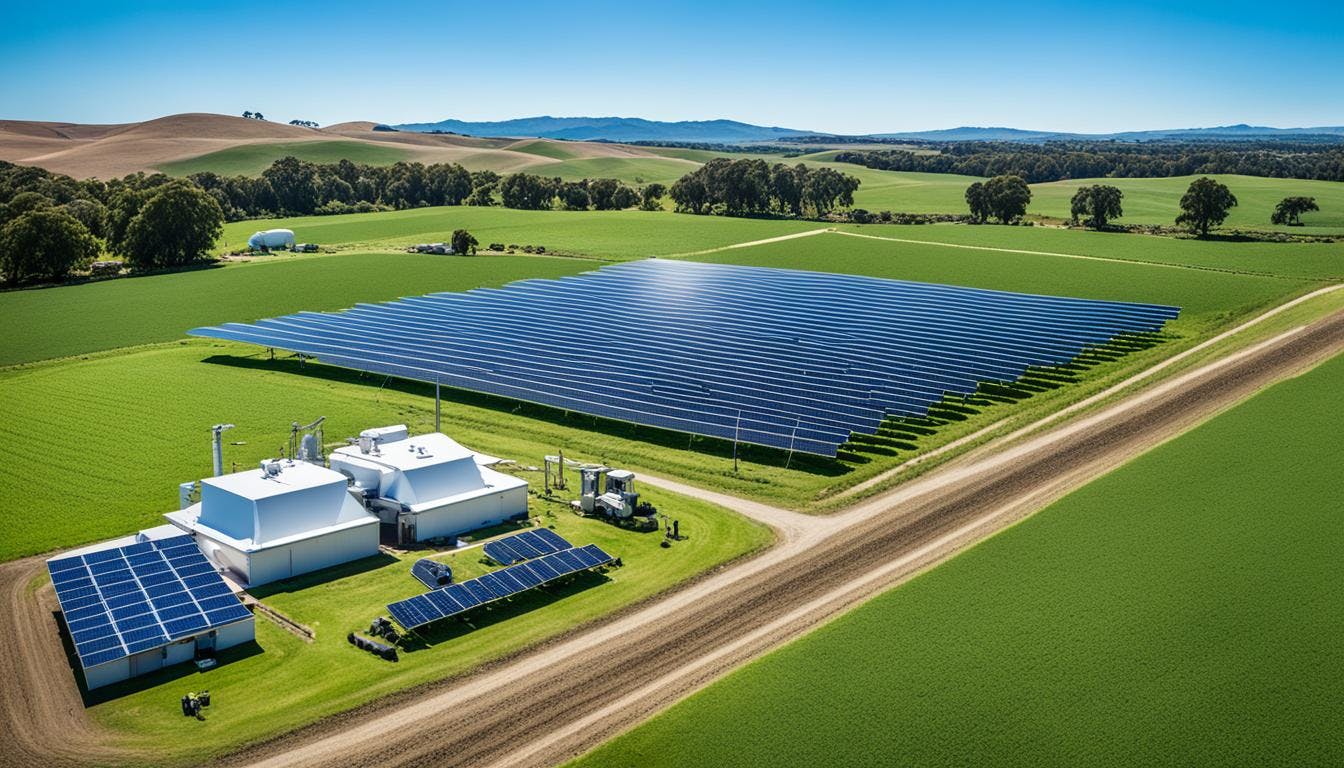
Innovative farming practices for a sustainable future
In New Zealand, dairy farming is changing thanks to new ideas. Farmers now focus on being efficient and productive, not just big. They use tech like eco-pond systems and cow wearables to help the planet.
This shift means less harm to the environment. It shows our dedication to farming the proper way.
Now, farmers mix the latest tech with old farming wisdom. This mix helps them farm in a way that's good for the earth. It also helps spread new and better farming methods across the industry.
One great example is Craig more Sustainable working with Dairy NZ. They share data and ideas to make farming better for everyone. This mix of old and new is key to a brighter future for dairy farming in New Zealand.
By focusing on efficient farming, we're cutting down on harmful gases and promoting a sustainable way of life. The goal is to make dairy farming successful and caring for the earth for years to come. This shows how important new ideas are in farming today.
Collaborative efforts in environmental management
New Zealand’s dairy farmers are at the forefront of eco-management. They work together on various projects to improve the environment. Their work has led to better water quality, less pollution, and more sustainable farming.
The Dairying and Clean Stream Accord (DCSA), initiated in 2003, set objectives for excluding cows from waterways and better nutrient management. A decade later, the Sustainable Dairying: Water Accord (SDWA) was introduced to further enhance the health of New Zealand’s waterways.
In 2013, the Forages for Reduced Nitrate Leaching (FRNL) programme began, promoting forage production techniques that cut nitrate leaching by over 20%. The same year saw the establishment of the DairyNZ Dairy Environment Leaders (DELs), a group dedicated to environmental stewardship.
2018 marked the launch of three significant projects in the Tararua, Selwyn-Hinds, and Aparima Catchments, aimed at improving water quality. Additionally, the Greenhouse Gas Partnership Farms Project was introduced to help farmers reduce their emissions.
The He Waka Eke Noa partnership, initiated in 2019, seeks to reduce emissions and ensure all farms measure their emissions by 2025. Significant progress has been reported under the Sustainable Dairy: Water Accord, including fencing off 98% of critical waterways and auditing 100% of farms for effluent management.
The DELs network, which began in 2007, includes around 400 dairy farmers committed to sustainability. This network, involving the NZ Farm Environment Trust and DairyNZ, supports and leads efforts to reduce the environmental impact of farming.
Upcoming forums will gather 70 DELs to strategize on further environmental progress. These meetings provide a platform for farmers to exchange ideas and collaborate on creating a sustainable future. According to Dr. David Burger from DairyNZ, DELs are instrumental in protecting waterways, planting trees, and reducing emissions, ensuring the environment remains safe for future generations.
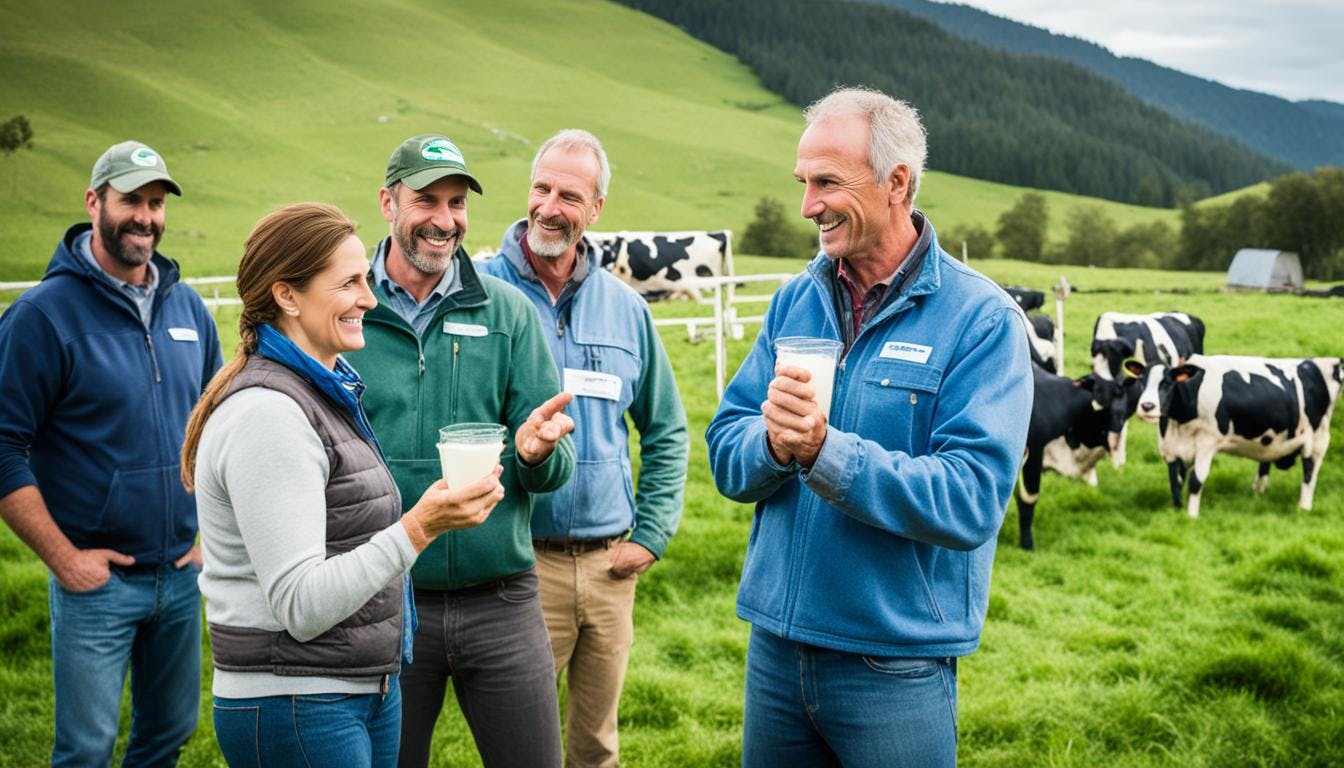
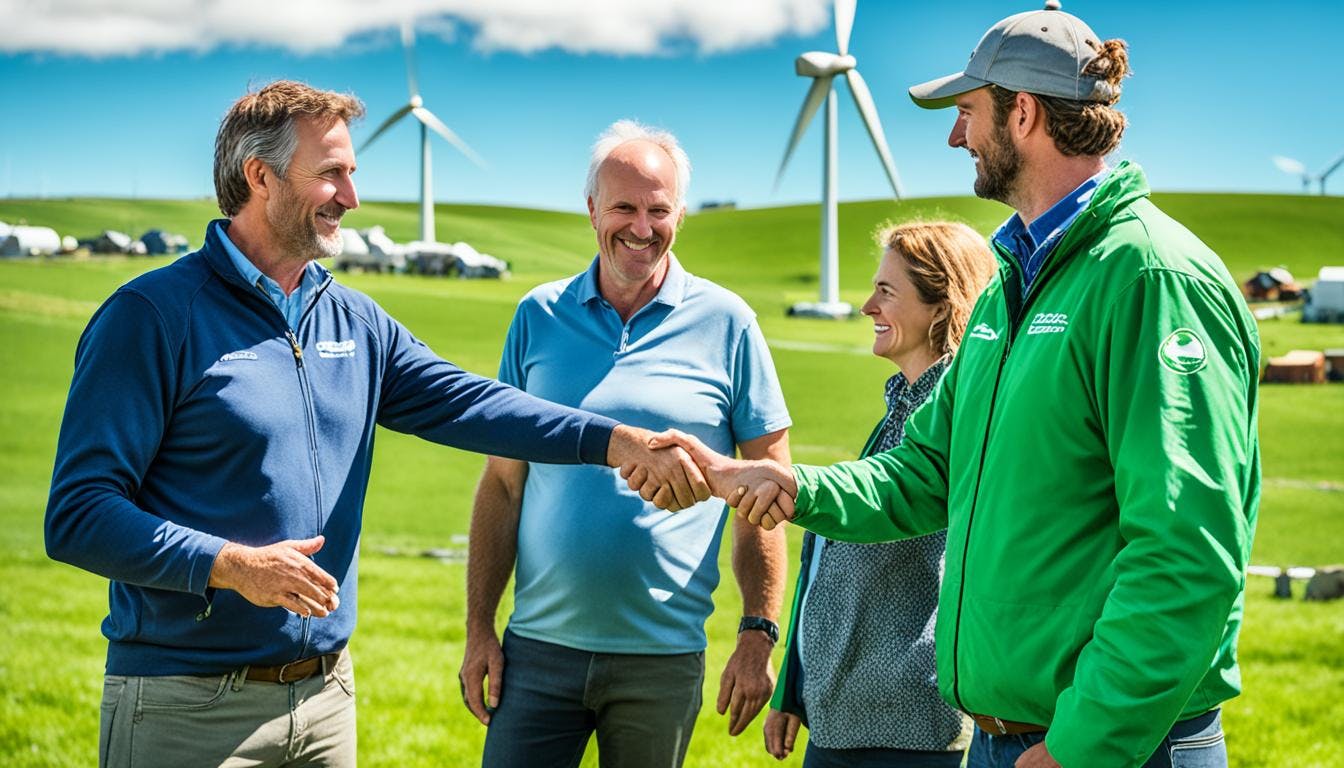
The role of Government and Organisations
New Zealand’s dairy industry is thriving by balancing high milk production with environmental stewardship. This success is driven by robust environmental policies and dairy industry regulations. A notable example is the Dairy Action for Climate Change initiative, a collaborative effort between the dairy industry and the government aimed at reducing carbon emissions.
By 2025, all farms are required to implement and report under a Farm Environment Plan.
In 2018, the Dairy Tomorrow strategy was introduced to improve water quality, support biodiversity, and reduce greenhouse gas emissions. This strategy represents a significant advancement toward enhancing farming practices and meeting global environmental standards, with substantial government support.
The Dairy Clean Streams Accord, established in 2003, and the Dairy Water Accord, launched in 2013, demonstrate the dairy sector’s commitment to environmental protection. In 2018, the Good Farming Practice Action Plan for Water Quality was introduced, aiming to ensure that rivers are safe for swimming and ecosystems are healthy through improved farming practices.
Research and innovation are also crucial. For example, the $22 million Plantain Potency and Practice Programme explores the use of plantain as a feed crop to reduce nitrogen leaching. This initiative highlights the collaboration between the government and the dairy industry to drive environmental improvements.
Overall, New Zealand’s dairy farming has achieved notable success in both high milk production and environmental care. This collaborative approach is key to ensuring a sustainable future for the dairy industry.
Sustainable dairy production methods
Dairy farmers are increasingly prioritising sustainability, focusing on efficient water use and optimised animal diets to reduce the environmental impact of livestock farming. These efforts are essential for ensuring the planet remains healthy for future generations.
Efficient Water Usage
Effective water management is crucial for conserving water in dairy farming. The Netherlands’ "Sustainable Dairy Chain" programme is a leading example, promoting practices such as recycling water for crops, using efficient irrigation systems, and implementing automated watering. These methods help reduce water consumption while maintaining productive farms.
Optimised Animal Diets
Proper animal nutrition is vital for sustainable feeding practices. Incorporating feed ingredients such as kale and fodder beet, and reducing the use of nitrogen fertilisers, has been shown to yield positive results. These dietary adjustments help decrease emissions of harmful gases like methane and nitrous oxide, representing a significant step towards mitigating the environmental impact of livestock farming.
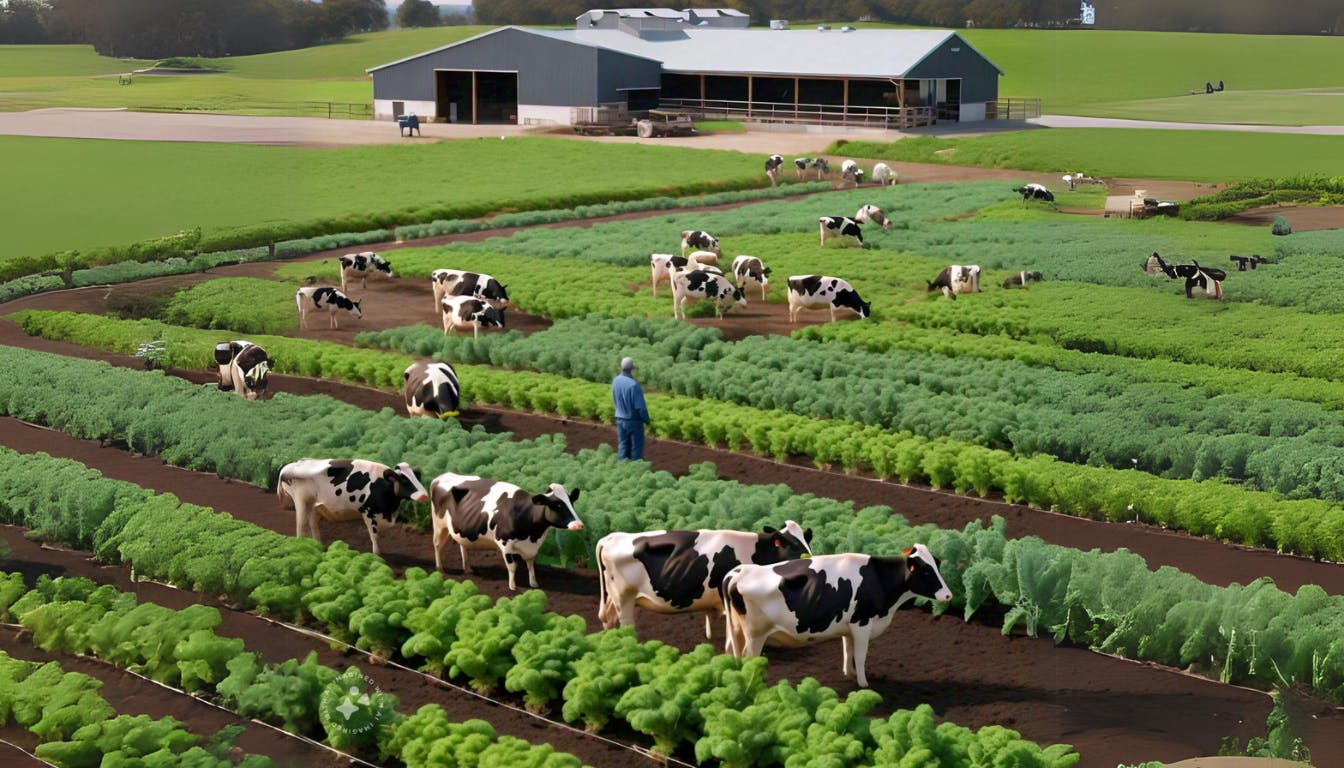
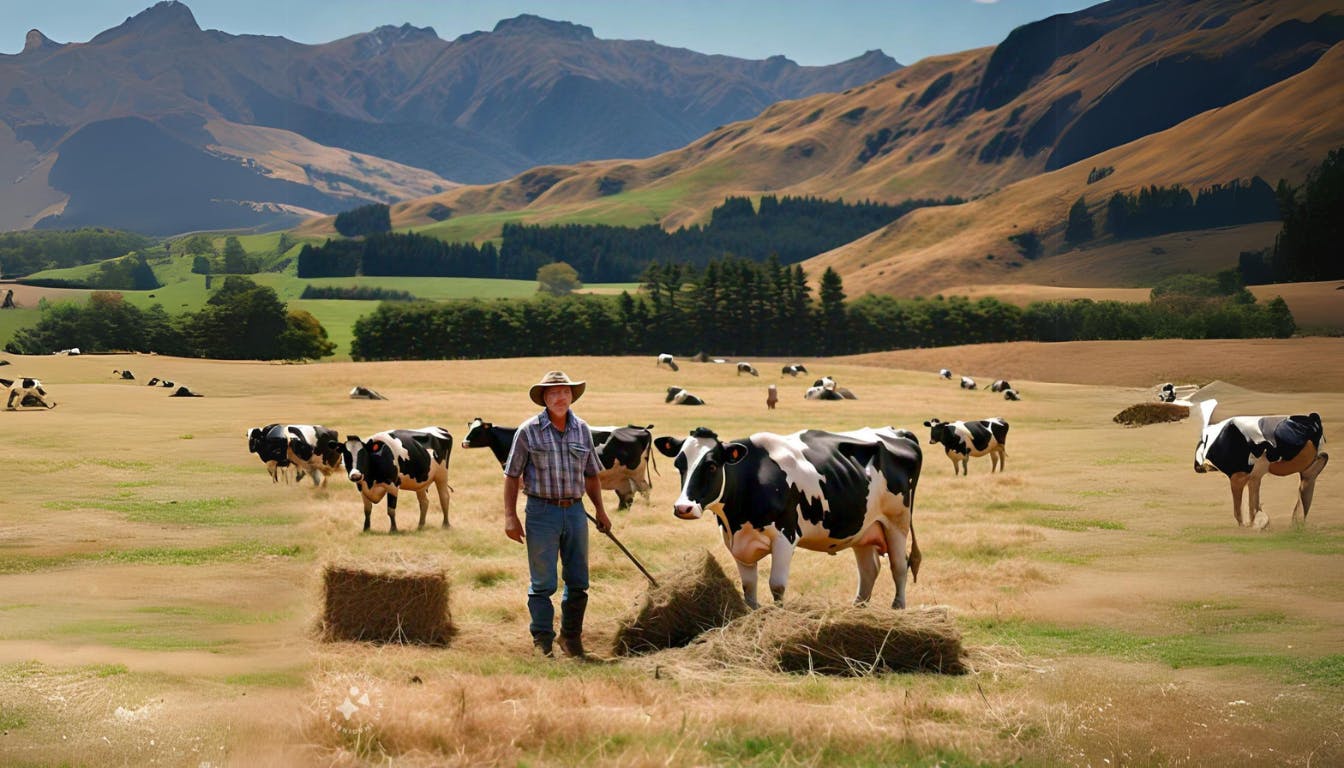
The impact of climate change on dairy farming
Climate change is significantly impacting dairy farming, necessitating adaptation strategies to lessen its effects. Monitoring the environmental changes affecting farming is crucial.
Observable Effects on Farms
In New Zealand, dairy farming contributes over $19 billion to the economy. However, climate change is posing challenges, such as shifting seasons and fluctuating growth rates, which complicate feed management.
By 2040, climate change is expected to reduce productivity and profitability in many regions, highlighting the seriousness of the issue. New Zealand cattle are also at risk of overheating on days exceeding 25°C, which could lead to decreased milk production. These impacts underscore the need for potentially reducing herd sizes to maintain farm stability.
The Dairy Action for Climate Change Initiative
The Dairy Action for Climate Change initiative demonstrates the benefits of collaborative efforts in addressing climate change within the dairy sector. Scientists, farmers, and the government are exploring innovative methods to optimise food production and farm management while reducing greenhouse gas emissions.
Emerging technologies are being investigated to improve pastures and enhance plant drought resistance. Additionally, breeding cows that are more resilient to temperature extremes could help stabilise milk production despite changing weather conditions.
Ongoing commitment to climate action and sustainable farming practices is essential for overcoming these challenges. New Zealand dairy farmers are leading by example in adapting to and mitigating the impacts of climate change.
New Zealand dairy farmers' environment: Leading global sustainability
New Zealand dairy farmers are leading the way in balancing production with environmental stewardship. They are actively engaged in sustainable practices, including the use of the SAI Platform’s Regenerating Together global framework to enhance water quality. This demonstrates their commitment to sustainable farming.
Fonterra, a cooperative owned by farming families, is at the forefront of implementing regenerative agriculture practices. By supporting the Regenerating Together framework, Fonterra is improving its farming methods and bolstering New Zealand’s reputation for environmentally conscious dairy production.
Sustainability Dairy Advisors assist farmers in developing detailed Farm Environment Plans, which are essential for ongoing improvements. These plans focus on soil health, animal welfare, and biodiversity, promoting sustainable farming practices. Collaborative efforts like these are vital for advancing regenerative practices across the dairy industry.
The SAI Platform’s Regenerating Together framework enables farmers to measure and compare their progress fairly, while also fostering opportunities for collaboration. This support is instrumental in helping Fonterra's farmers achieve success in a more sustainable ecosystem.
New Zealand dairy farmers have a carbon footprint 48 per cent lower than the global average, with an impressive carbon footprint of 0.77 kg CO2e per kg of FPCM (Fat and Protein Corrected Milk). This highlights New Zealand’s leadership in dairy sustainability.
The country’s success is largely attributed to grass-based farming systems and genetic advancements, both of which contribute to a reduced carbon footprint. These practices underscore the efficiency and environmental care of New Zealand’s dairy industry.

Research and innovations in reducing environmental impact
New Zealand's farms face significant challenges due to the presence of approximately 10 million cows and 26 million sheep, which produce substantial greenhouse gases, particularly methane. To address this, over NZ$90 million has been invested in research and technology since 2009.
A major focus is on reducing methane emissions from dairy cows. Current methods, such as dietary supplements, can potentially cut emissions by around 10%. However, new technologies, like Bovaer, are promising to achieve reductions of up to 30%. Additionally, breeding special bulls that emit less methane could result in a reduction of 15 to 20%.
Sheep also contribute to methane emissions, though less than cows, with each sheep producing approximately 13 kg of methane annually. Selecting sheep breeds that emit less methane could lead to a yearly reduction of about 1%.
The overarching goal is to cut methane emissions by 10% by 2030 and by 24-47% by 2050, aligning with New Zealand's environmental targets.
Research indicates that cows excrete significant amounts of nitrogen, which can adversely affect the environment. Breeding cows that utilise nitrogen more efficiently can reduce nitrogen runoff and lower methane emissions. This approach also has the benefit of increasing milk protein production, which is advantageous for farmers.
Since 1990, intensification in New Zealand farming has led to increased greenhouse gas emissions. The dairy industry is committed to mitigating its environmental impact and strives to harmonise productive farming with environmental protection, in line with the principles of kaitiakitanga (guardianship).
Conclusion
Looking back at New Zealand's dairy farming, it's clear that sustainability is crucial for its future. By 2012, the number of cows had surpassed the human population, illustrating the scale of the dairy industry. This prominence has led to increased scrutiny of its environmental and economic impacts, particularly in regions like Canterbury.
New Zealand's rivers generally maintain good water quality, but Canterbury's water quality remains a concern. This highlights the need for improved water management and pollution reduction. Organisations such as Fish and Game New Zealand are working to reduce pollution, and the government has set targets to support the dairy industry’s growth by 2025. Fonterra is at the forefront of these sustainability efforts.
Achieving a equilibrium between milk production and environmental protection requires innovative solutions, collaboration, and rigorous monitoring. The path ahead is challenging, but with the right strategies, we can advance dairy farming sustainably. Projects like New Zealand Dairying in Question and initiatives focused on water use are helping drive this progress.
FAQ
How can New Zealand dairy farmers harmonise production with the environment?
New Zealand dairy farmers can harmonise production and the environment by using farm-specific measures. These include reducing greenhouse gas emissions and optimising water usage. They also improve animal diets to lessen environmental impacts. This approach keeps productivity up while protecting natural resources.
Why is sustainability important in New Zealand dairy farming?
Sustainability is key in New Zealand dairy farming to meet global food demands while protecting the environment. It means using environmentally conscious farming methods and responding to consumer trends. This ensures long-term benefits for farmers and the environment.
How does consumer demand influence sustainable dairy farming?
Consumer demand drives sustainable dairy farming, with 75% of millennials and 34% of baby boomers choosing sustainable products. This trend pushes the dairy industry to be more environmentally responsible. It matches what consumers want.
What are the long-term benefits of sustainable dairy farming?
Sustainable dairy farming is good for farmers and the environment. It keeps soil healthy, cuts down on greenhouse gases, saves water, and helps reduce climate change. This approach supports a strong future for dairy and encourages looking after the environment.
How do greenhouse gas emissions affect dairy farming?
Greenhouse gases from dairy farming, like methane and nitrous oxide, harm the environment. It's vital to manage and lower these emissions. Doing so is key to sustainable dairy farming and protecting the environment.
What strategies can farmers use to reduce emissions?
Farmers can cut emissions by using less nitrogen fertiliser, better animal diets, and growing alternative crops. Improving farm efficiency is also important. Knowing the farm's emissions helps make better reduction plans.
How has Fonterra reduced its greenhouse gas emissions?
Fonterra has cut its greenhouse gas emissions by a third in five years. It's done this by growing alternative crops, using less nitrogen, and testing water. These steps show Fonterra's dedication to the environment.
What innovative farming practices contribute to sustainability?
Innovative farming practices help with sustainability. They include saving water, finding new ways to reduce emissions, using climate-resilient crops, and advanced farm management tech. These efforts boost long-term farm sustainability.
How do collaborative efforts enhance environmental management in dairy farming?
Working together among governments, businesses, scientists, and consumers helps manage the environment better. This teamwork shares resources and knowledge to tackle environmental challenges. The Dairy Action for Climate Change shows how well this can work.
What role do government and organisations play in supporting sustainable dairy farming?
Government and organisations back sustainable dairy farming with policies, funding for research, and environmentally conscious initiatives. They're key in creating rules and giving farmers the tools to become sustainable.
What are some sustainable dairy production methods?
Sustainable dairy production includes using water wisely, feeding animals better, managing fertilisers well, and using tech to improve farms. These steps help reduce emissions and use resources better.
How does climate change impact dairy farming in New Zealand?
Climate change affects dairy farming in New Zealand with more storms, extreme weather, and less water. Farmers need to adapt to keep producing sustainably.
What is the Dairy Action for Climate Change initiative?
The Dairy Action for Climate Change is a joint effort by Dairy NZ, Fonterra, and government ministries. It focuses on tackling climate change in dairy farming through research and strategies to lower emissions and make farms more resilient.
How is New Zealand leading global sustainability in dairy farming?
New Zealand leads in dairy farming sustainability with its innovative methods, low emissions, and proactive environmental management. The country sets a global standard for environmentally conscious dairy practices.
What research and innovations are being developed to reduce the environmental impact of dairy farming?
Research and innovation aim to lessen dairy farming's environmental impact. This includes studying animal genetics, methane-reducing vaccines, and sustainable tech. These efforts aim to cut greenhouse gases and support sustainable farming.
17 South Street
Auckland 1010
New Zealand
info@carbonclick.com- -
- X
Sign up. Be inspired. Get clicking.
Subscribe now to stay up to date with CarbonClick, carbon offsetting and climate action.
By signing up you agree to our Privacy Policy.


